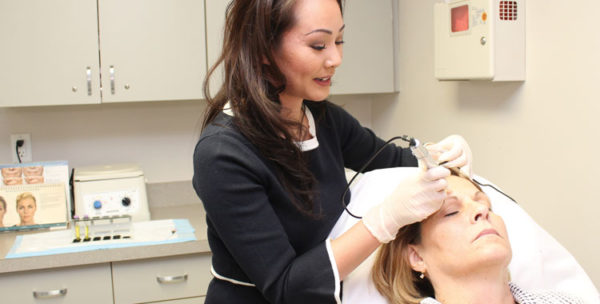Your Body’s Platelets Can Be Put to Good, Multiple Uses
by BusinessWoman magazine / 0 Comments / 260 View / December 29, 2017
It’s certainly versatile. Platelet-rich plasma (or PRP) is used both to treat injury or damage as well as to reap cosmetic benefits.
Basically, PRP is a highly concentrated injection of the body’s own platelets, said Jennie-Corinne R. Baublitz-Brenenborg, D.O., interventional pain management physician at Argires Marotti Neurosurgical Associates of Lancaster.
In other words, the procedure is autologous — meaning the patient and the donor are the same. The patient’s blood is then centrifuged down to concentrate the platelets.
“Platelets have a high concentration of healing growth factors,” said Baublitz-Brenenborg. “The concentrated plasma is injected into an area of bone or soft-tissue degeneration and used to promote a healing response in injured or damaged tissue.
“PRP is a natural treatment, which has been used for several years in healing injured tendons, ligaments, muscles, and joints, and for any type of acute or chronic tendonitis or arthritis,” she added.

Jennie-Corinne R. Baublitz-Brenenborg, D.O.
Typically, the patient receives one to three treatments of PRP — which represents a good trial of therapy. Some patients experience pain reduction with the first treatment.
“If treatment isn’t effective after three treatments, the likelihood of it being effective is reduced,” said Baublitz-Brenenborg. “But it does take six to eight weeks to evaluate whether the body is responding.”
Patients receiving a PRP treatment can expect to be at the doctor’s office for one to two hours. That includes the blood draw, identical to a routine one; the centrifuging process; and the procedure itself, with a short post-procedure recovery period. The patient can go home the same day and needs only to “take it easy” that day.
“The next day they can resume their normal activities; there’s no significant down time,” said Baublitz-Brenenborg.
Generally, the risks/side effects are no greater than with any other injection procedure, such as bleeding and infection, and the doctor will discuss those with the patient.
“Compared with cortisone, in my opinion, the potential side effects are fewer,” Baublitz-Brenenborg added.
The procedure is still considered “investigational” rather than “standard medical care,” however, with no guarantee of improvement.
Still, many patients choose PRP after conventional treatments, such as physical therapy, corticosteroid injections, or surgery, have failed, or if the patient wants to pursue a more natural course to healing,” said Baublitz-Brenenborg. “The goal of treatment is permanent pain relief.”
PRP isn’t covered by insurance, despite some medical studies supporting its effectiveness.
“My guess is that if insurance does start covering it, it would do so with the treatment of lateral epicondylitis (tennis elbow),” she added.
Some studies of PRP use in the spine suggest pain relief equivalent to corticosteroid injections, which typically last three to six months. But, Baublitz-Brenenborg admitted, there aren’t a lot of data out there on how long this emerging technology works for pain.
PRP’s cosmetic uses are well known to Thuy Hoang, a registered nurse at Blossom Med Spa in Lancaster. It’s administered through a procedure called microneedling, an electric skin-needling device studded with 12 very fine needles.
“Useful for PRP, the device penetrates to the upper layers of the skin, creating tiny needle wounds to reduce/eliminate lines and wrinkles, tighten loose skin, [reduce] acne scars, and minimize pores,” said Hoang. “It can also stimulate hair growth on the scalp to increase hair volume and to strengthen hair.”
The process of microneedling and placement of PRP prompts the body to respond through the creation of new collagen and elastin fibers, she added. Microneedling is supposed to allow PRP to penetrate the skin, like a matrix.
In turn, the PRP “helps grow and regenerate the skin,” said Hoang.
The other way PRP can penetrate the skin is via a dermal filler, by injecting PRP into skin with a syringe.
The healing factors in PRP are relevant to the cosmetic uses as well. Plasma has nutrients, hormones, and proteins, and these components help regenerate new cells when injected into the skin, Hoang added.
When microneedling is used in conjunction with laser or a chemical peel, results are quicker.
The procedure is considered safe and noninvasive and takes only about 45-60 minutes, in addition to the blood draw (which takes 15-20 minutes) and centrifuging.
There’s no down time; patients can return to work or normal activities the next day.
“Because a numbing agent is applied prior to the procedure, it doesn’t hurt,” said Hoang, “though there may be a little redness and dryness.”
It may be surprising because of the presumed vanity of females, but she finds that both women and men choose to undergo microneedling with PRP, as do people of different ages.
“One reason for the popularity of the procedures is that a lot of clients are looking for good results in a natural way, using their own plasma.”


Your Commment
You must be logged in to post a comment.